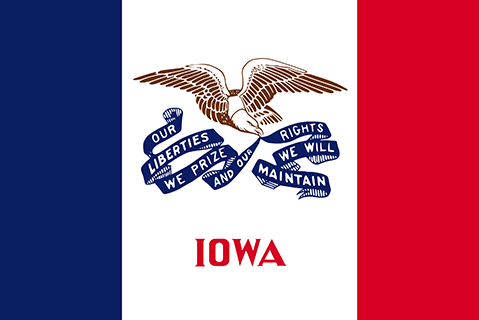Iowa continued to see slow population growth in 2020 U.S. Census Bureau data released Monday with the state resident population growing 4.7% in the last decade to 3,190,369 people.
While the state retained its four congressional districts, the muted population trend could mean the loss of one of those U.S. House seats in the future. Iowa’s percentage growth was significantly less than the national increase of 7.4%.
Between 2000 and 2010, Iowa’s population grew 4.1%.
Iowa was among 38 states that didn’t gain or lose U.S. House representation.
Six states gained seats with Colorado, Florida, Montana, North Carolina and Oregon gaining one while Texas gained two. California, Illinois, Michigan, New York, Ohio, Pennsylvania, West Virginia each lost a seat.
Iowa also has an additional 2,037 residents living overseas, and they are counted when considering congressional seats.
The Census data enables states to determine the number of congressional seats they’ll have for the next decade but officials will need to wait for more detailed data in the late summer or fall to redraw congressional and legislative boundaries.
The latest figures in Iowa reflect a century of typically slow growth, and later data likely will show a shift from rural areas to the state’s largest cities has continued, said Iowa State University sociology professor David J. Peters, who studies the census and its impact on Iowa.
Peters said the data shows that Iowa is becoming more centralized in urban and suburban areas.
“If you think of where the expansion of population has been, it’s really that we’re a rapidly suburbanizing population,” he said.
Related to that trend is the fact that many counties are losing their rural designation as they’re pulled into the orbit of and becoming a suburban part a larger sprawling city, including Des Moines, Iowa City and Omaha, Nebraska, he said.
The west-central portion of Iowa has been losing the most population due to people moving toward cities. As a result, a future reduction in the number of congressional seats could result in a very large western Iowa district, Peters said.
“We may be getting to the point where you can think of the entire western half of the state — maybe not this census but probably the next census — we’ll have one representative representing half the state just because that’s where the population loss is occurring,” he said.
In 1910 Iowa had a population of 2.2 million people and 11 U.S. House representatives, each of whom represented about 202,000 citizens. Population has grown every year except 1910 and 1990 but slowly. Representation gradually declined with two seats lost in the 1930 census and one seat lost in each of the census years 1940, 1960, 1970, 1990 and 2010, leaving the state with four House seats but a population of just over 3 million people.
As of 2020 each member of the U.S. House from Iowa represents about 798,000




